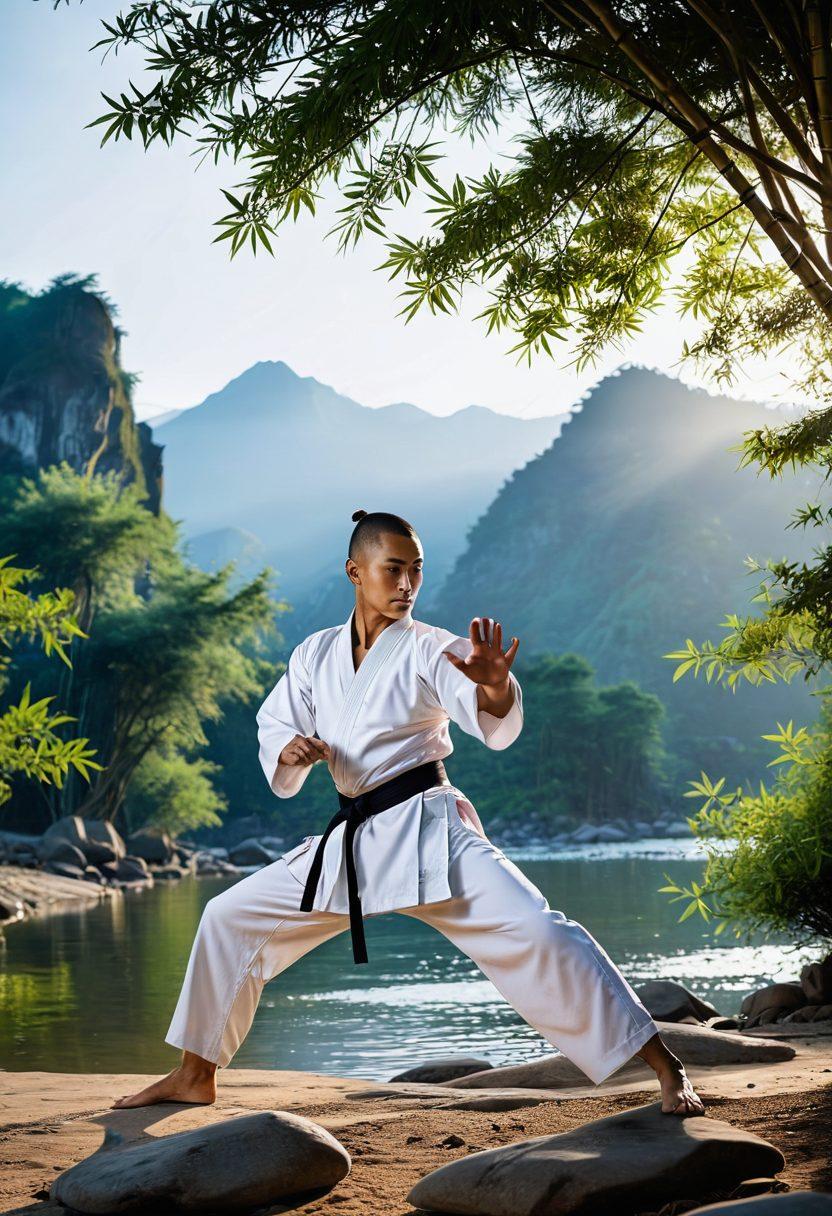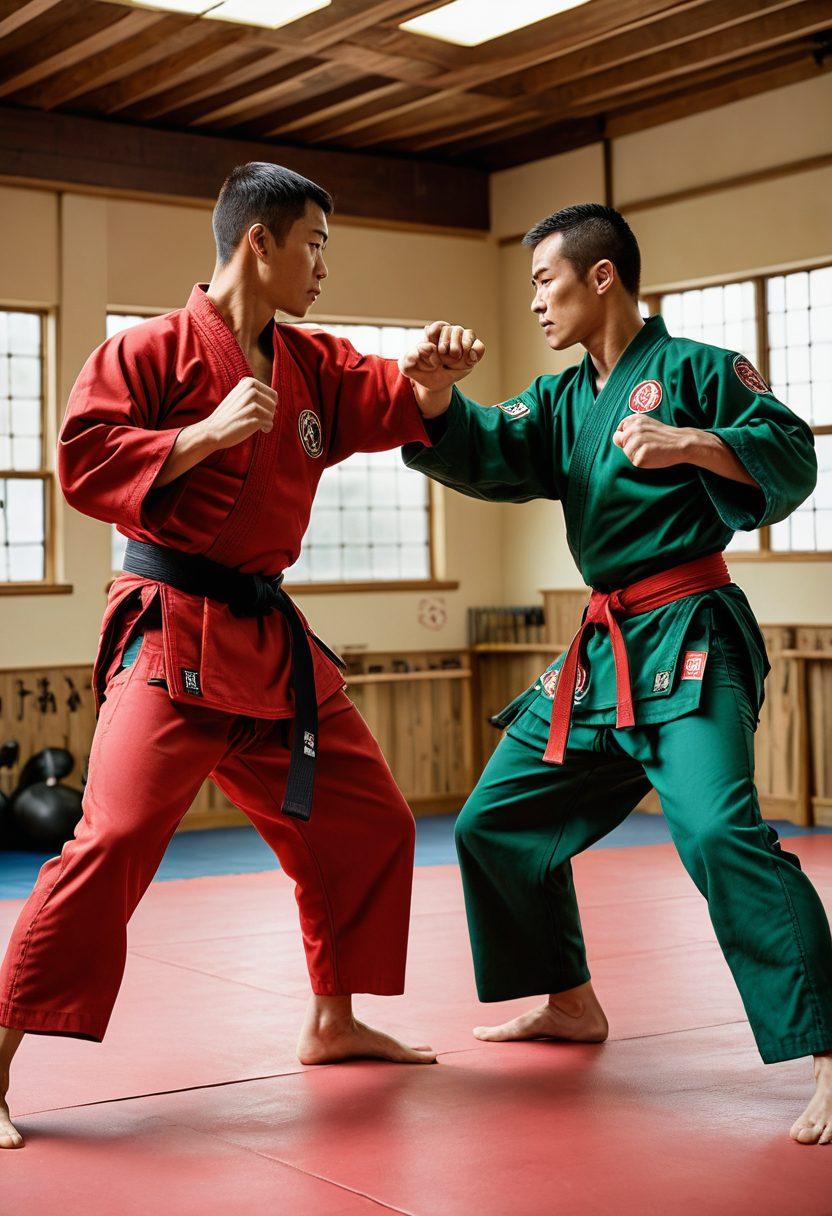Mastering the Art of Defense: Unleashing the Power of Martial Arts Techniques
Have you ever found yourself in a situation where you wished you could defend yourself? Perhaps you've witnessed a friend face an altercation and felt helpless watching from the sidelines. The truth is, personal safety is a priority for all of us, and that’s where mastering martial techniques can make a significant difference. With the right skills and knowledge, self-defense transforms from a reactive measure into a powerful proactive strategy. In this piece, we will explore essential martial techniques that are not only effective but can elevate your self-defense game to new heights.
Martial arts encompass a world of disciplines from karate to taekwondo, judo to kung fu. Each offers a unique set of skills tailored for various self-defense situations. For instance, karate emphasizes striking techniques that allow practitioners to deliver powerful hits while maintaining distance from an aggressor. Taekwondo, on the other hand, showcases the elegance of high, fast kicks. Have you ever thought about which martial art aligns with your personal preferences? Whether it’s the grace of kung fu or the grappling strategies of judo, exploring various martial arts styles can lead you to the perfect fit for your self-defense training.
Imagine engaging in a sparring session, where your heart races not out of fear, but from the exhilaration of being able to defend yourself confidently. Sparring techniques in combat sports offer a fantastic way to apply martial arts training in real-time scenarios. They highlight not just physical strength, but timing, agility, and strategy—fundamental elements in any self-defense scenario. Joining a self-defense class allows you to practice these skills under the guidance of experienced instructors within the supportive embrace of the martial arts community, fostering both camaraderie and growth.
Incorporating martial arts exercises into your daily routine also contributes to martial arts fitness, enhancing your agility, strength, and endurance—qualities that are indispensable during a threatening encounter. Have you ever wondered how many punches or kicks you could throw before fatigue kicks in? Committing to the practice of martial techniques delivers not only fitness benefits but instills a philosophy that promotes discipline, respect, and a deeper understanding of personal safety. Each training session serves as a step towards becoming a more self-assured individual, equipped to face challenges—both on and off the mat.
Lastly, it’s important to note that traditional martial arts training emphasizes not just physical ability, but also mental fortitude and self-control. Participating in martial arts competitions can be a thrilling way to test your skills while reinforcing the principles of defensive tactics learned in classes. Remember, self-defense is not about physical confrontation but rather about cultivating a mindset that values de-escalation and awareness. As we delve deeper into the art of defense, are you ready to unlock your potential through the myriad of martial arts techniques available to you? Your journey into self-defense awaits.
From Karate to Kung Fu: Explore the Rich Landscape of Martial Arts Disciplines
When you think of martial arts, what comes to mind? The precise kata of karate or the fluid movements of kung fu? Perhaps it's the dynamic kicks of taekwondo or the strategic grappling techniques of judo. The truth is, martial arts encompass a rich tapestry of disciplines, each with its own unique history, philosophy, and set of techniques. For those looking to delve into the world of self-defense, combat training, or simply to get fit, exploring the rich landscape of martial arts disciplines can be not only rewarding but also a life-changing journey.
Imagine stepping onto the mat for the first time, surrounded by dedicated individuals, their bodies moving in a rhythmic dance of combat sports. Each discipline offers its own flavor of martial arts techniques. In karate, you'll learn powerful striking techniques that empower you physically and mentally. In contrast, kung fu teaches you to be fluid and graceful while honing your self-defense strategies through discipline and respect. Such variety offers something for everyone, no matter your age or skill level, even martial arts for kids!
A wise martial arts master once said, 'The ultimate aim of martial arts is not having to use them.' This philosophy encourages us to adopt a mindset of personal safety and self-awareness. Whether you're interested in traditional martial arts that respect ancient practices or modern martial arts that prioritize practicality and efficiency, each offers unique defensive tactics that can enhance your self-defense classes and overall confidence.
Ever considered joining a martial arts community? Each throw in judo and every kick in taekwondo comes with an opportunity for camaraderie. Beyond the techniques, martial arts training cultivates friendships and resilience. There’s a special thrill in sparring techniques shared in competitions, where mutual respect and skill intersect to create profound experiences. You’ll find bonds that can last a lifetime while you undertake the demanding journey of mastering martial arts exercises and philosophies.
In the end, whether you’re wielding a weapon in weapon training or executing a perfect roundhouse kick, the skills you acquire extend beyond the dojo. The principles learned through martial disciplines not only teach self-defense techniques but also instill a sense of discipline, respect, and confidence in everyday life. So why embark on this journey? Because martial arts is more than just a practice; it’s a way of embracing life with vigor and purpose. Begin exploring the martial arts today, and discover your inner warrior!
Combat Training: Sparring Techniques and the Philosophy Behind Personal Safety
In the world of martial arts, combat training is more than just a series of movements and techniques; it embodies a philosophy rooted in personal safety and empowerment. Many people enter the dojo with a singular goal—to defend themselves. But through the journey of mastering martial arts, from karate to kung fu, practitioners find so much more. Have you ever considered how sparring techniques can boost not only your physical abilities but also your mental resilience? This blog will delve into the heart of combat training, exploring self-defense strategies and the underlying philosophies that make martial arts disciplines transformative.
Sparring is one of the most exhilarating aspects of martial arts training, where techniques come alive in real-time scenarios. Remember your first sparring match? The adrenaline coursing through your veins, the quick footwork, and the focused mindset—it’s a raw experience that encapsulates the essence of martial arts. Whether you practice judo's grappling or taekwondo's striking techniques, every encounter hones your ability to react quickly and effectively. Sparring not only acts as a practical application of martial techniques but also improves your awareness of personal safety. But how do you train your mind for potential threats?
The philosophy behind self-defense is rooted in the idea of being prepared, not just physically, but psychologically. It is about cultivating awareness and developing defensive tactics that resonate with each individual's personal style. Traditional martial arts emphasize respect and discipline, while modern martial arts may lean towards practicality and efficiency. Isn't it fascinating how different martial disciplines—be it karate, kung fu, or even weapon training—can teach us valuable lessons about life outside the dojo? The lessons extend beyond the mat; they empower us to navigate our daily lives with confidence and composure.
In the martial arts community, sparring is often the bridge between theory and practice. It's where beginners transition from watching demonstrations to actively participating. It can be intimidating to step into the ring, especially for newcomers. However, engaging in sparring techniques within a supportive environment allows individuals to learn, grow, and foster camaraderie. Moreover, many self-defense classes emphasize that consistency is key. Regular practice not only enhances your martial arts fitness but also reinforces your self-defense techniques. What if you could unlock a whole new level of self-assuredness simply by showing up to your training sessions?
Ultimately, understanding the philosophy behind martial arts helps individuals appreciate the journey of combat training. It underscores the significance of self-discipline, respect, and resilience, forming a well-rounded approach to personal safety. As we explore the myriad benefits of martial arts—be it for self-defense or fitness—one thing remains clear: the power of martial arts techniques lies not just in the physicality of combat sports, but in the way they empower us to protect ourselves and others. How will you transform your approach to self-defense today?


